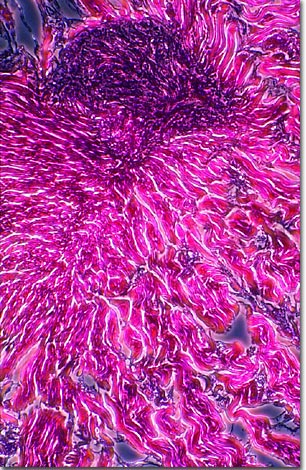Phase Contrast Image Gallery
Earthworm Clitellum
The earthworm or night crawler, known scientifically as Lumbricus terrestris, inhabits all areas of the planet ranging from Iceland to Australia. The photomicrograph below is a phase contrast image of a stained thin section of earthworm clitellum.

Earthworms prefer a wide spectrum of habitats including forests, grasslands, river banks, and can be easily located under logs, in compost or in woody peat. They require soil that allows them to burrow several meters into the ground to avoid cold during the winter and extreme heat in the summer. In their attempt to prevent damage from ultraviolet radiation during daylight hours, earthworms generally surface at night in search of food.
Near the anterior end of the earthworm's body lies a band of thickened secretory epithelium termed the clitellum, which secretes a mucus cocoon to protect gametes. The earthworm has a segmented body, with each segment being separated from neighboring segments with a circumferential groove. Growing to a size of four meters in length, earthworms have a relatively long life cycle that can last from three to six years.
Earthworm bodies have a reddish-brown pigment and are devoid of eyes, ears, lungs, or even a discernable head. The digestive system is a linear tube extending from the mouth to the anus, with specialized regions that perform the functions of storage, hydrolysis, adsorption and feces formation. The vascular system is composed of red blood containing hemoglobin, which is passed through a simple circulatory system that includes two major longitudinal vessels, the contractile dorsal vessel and the ventral vessel.
The most studied member of the earthworm family is Lumbricus terrestris, best known as the night crawler, which is widely used as fishing bait.
BACK TO THE PHASE CONTRAST GALLERY
